Arizona Football Defensive Preview
Arizona's defense gives up 31.8 points/game, the most in the Pac-12. Can they stop Cal? With evil voodoo magic on their side, you can never be too sure.
As I mentioned at the end of the Offensive Preview yesterday, Cal hasn’t beaten Arizona since 2009, and they haven’t won in Tuscon since 2004. Of course, Cal recently exorcised their Oregon State demons, so who’s to say that they can’t do the same in Arizona?
[Update shortly before publishing time: Apparently, multiple Cal starters will be out due to Covid-related protocols. The bad Arizona juju strikes again.]
Statistically—and there’s no nice way to put this—Arizona’s defense is bad. Numbers can be misleading, but you don’t need to drill down too deep to explain some of Arizona’s stats. For example, Arizona gives up 385.4 yards per game, which is 5th in the Pac-12. Explanation: teams need fewer yards overall to score. Arizona is 127th (out of 130 FBS teams) in redzone defense, giving up 19 TDs and 6 FGs on 26 trips (in other words, Arizona has 1 single stop in the redzone in 26 attempts). Arizona gives up 193.5 yards passing per game, which is good for 2nd in the Pac-12, and 23rd in the FBS. Explanation: teams don’t throw the ball much since it’s far easier to run the ball against Arizona. Arizona gives up 191.6 rushing yards per game, good enough for 11th in the Pac-12 and 108th in the FBS (only Stanford is worse at stopping the run). And if you drill down a bit deeper, Arizona isn’t all that great at stopping the pass either: they give up 9.99 yards per completion, which is again last in the Pac-12 and 125th in the FBS. This is how you end up with the worst defense in the Pac-12, and one of the worst defenses in the country.
(Of course, every time I say something or someone is bad, they end up having the game of their life against Cal. So let me rephrase: Arizona has the best defense in the Pac-12, possibly one of the best of all-time. Arizona’s offense is the unstoppable force, and Arizona’s defense is the immovable object.)
Now that that’s out of the way, I should mention that Arizona runs a 4-3 defense, with two corners, two safeties (a free safety and a “rover”, i.e. the strong safety), and one “viper,” which is effectively a hybrid linebacker/safety position. This easily transitions to e.g. a 4-2-5 cover-1 defense, with the free safety deep, the viper replacing the strongside linebacker (to cover the tight end), and the rover rotating over to cover the slot receiver. The defensive coordinator is Don Brown, who was previously the defensive coordinator under Jim Harbaugh at Michigan, and he led some of the top defenses in the country at Michigan. Don Brown’s nickname is “Doctor Blitz.” The over/under on number of times this will be mentioned during the broadcast is 4.5. After all, what’s the point of having a doctorate degree in blitzing if someone won’t bring it up all the time? Unsurprisingly, Don Brown has an aggressive style of defense, with—you guessed it—a lot of blitzes. No one will bring 5- or 6-man rushers more often than Dr. Blitz, with the occasional cover-0 all-out blitz mixed in there. Arizona is counting on creating havoc to cause the quarterback to make mistakes or have the offense moving in the wrong direction (even in the endzone: Arizona has scored multiple safeties this season), and teams will throw a lot of screens and quick outs to combat this (and occasionally the big play that always happens when you keep leaving overmatched defensive backs on an island when you blitz too many). Of course, you can imagine that these busts happen more with Arizona’s personnel than with Michigan’s talented and often NFL-bound players.
Probably not surprisingly for a team that loves blitzes, the Arizona defensive unit with the most depth is the defensive line, and so most of this article will probably focus on them. Let’s take a closer look.
Defensive line
The defensive line is obviously the strength of this defense, with an emphasis on the pass rush. Watch as the entire Arizona defensive line manhandles the Oregon offensive line, as even the mobile QB Anthony Brown could not escape the collapsing pocket:
Mo Diallo plays the “anchor” position for Arizona, which basically means he’s the strongside defensive end. Diallo, a transfer from Central Michigan, has been a pleasant surprise this season after the starter, JB Brown, was lost for the season due to injury. Diallo has been making his presence felt, already leading the team in sacks despite not starting a game until a couple weeks ago (against Colorado, I believe).
In a nutshell, Diallo just has good instincts for finding the football:

Arizona likes to run the green dog blitz, in which they bring additional rushers when they identify that the man that they are responsible for is in pass coverage. You can’t sit in the pocket forever:
The closest thing Arizona has to an NFL prospect is the weakside defensive end, Jalen Harris. Harris has NFL size and speed as a pass rusher, which is probably not surprising given that his father is 7-year NFL pro linebacker, Sean Harris.
Here he beats USC offensive tackle Jalen McKenzie, an NFL hopeful himself:
Here Harris makes sure the quarterback doesn’t escape the pocket:
Another surprise this year is freshman defensive tackle Paris Shand. Shand has taken a couple snaps all along the defensive line in relief of other players, but he had a larger role last week against USC and made a noticeable impact in generating pressure. Here Shand lines up at defensive end and beats USC’s left tackle for the sack:
On the interior of the line, Trevon Mason is the standout. Here, Mason beats his block to tackle the running back for a safety:

One of the reasons I think Mason is a standout on the line is just how frequently he gets a hand on the ball, even when he can’t get to the quarterback. I’d wager that there isn’t a defensive lineman in the country with more passes knocked down at the line than Mason:
In the following play, Mason comes around on the stunt to beat the Washington left tackle for the sack:
The Arizona defensive linemen tend to draw a lot of holding penalties on their opponent:
This last play is a good example of how well Arizona can disguise pressure. Watching it quickly, can you tell which positions rushed and which showed blitz before dropping back? If it takes you a couple loops to figure it out, imagine how hard it is for the quarterback and offensive linemen who only have a split second to determine their blocking responsibilities. Here, the Northern Arizona offensive line is fooled into leaving the nose tackle unblocked:
The above play shows the importance of the offensive line not only communicating well with one another, but working well with one another (which comes with experience), as they have to determine blocking assignments really quickly when they’re faced with confusing fronts.
Linebackers
The longtime anchor for the Arizona defense is the weakside linebacker Anthony Pandy, who has made a number of big-impact plays throughout his career. He’s one of those instinctive linebackers who flies all over the field to put himself in the middle of plays, and he’s Arizona’s tackling leader.
Here, he shows those instincts, knowing that Kedon Slovis loves to go with his first read, and he uses that against him to get the pick-6:
Pandy is a bit on the smaller side for a linebacker, but he’s still a pretty good pass rusher:
Although Pandy has good instincts to get to the ball carrier, he’s not the best solo tackler, and so it’s helpful when Arizona can get multiple defenders to the ball (Pandy is 8th in the conference in assisted tackles).
Viper
Wasn’t sure where to put the viper section, so I’ll add it as a subheader here. The Viper in Don Brown’s defense needs to be able to rush the passer, stop the run, and also handle man coverage responsibilities. This is Christian Young’s position, who transitioned from a safety. Young is more of a sure tackler than Pandy, and consequently has had a bigger impact in run support. Young is clearly fast:
As a former safety, Young has good pass coverage skills when matched up against a tight end:

Others of note: middle linebacker Jerry Roberts is the former backup who has been thrust into the starting role after the injury to Treshaun Hayward (also season-ending). The strongside linebacker is Kenny Hebert, who is at least decent at rushing the passer (and again, remember how often linebackers will blitz here).
This doesn’t fit in anywhere else, but the linebackers seem to be a more, uh, “emotional” group: both Christian Young and Rashie Hodge Jr (Anthony Pandy’s backup) have instigated fights, either through late hits or pointlessly starting scuffles. Consequently, Arizona is 116th (out of 130 teams) in penalty yards per game, which is surprisingly good enough for 10th in the Pac-12 (ASU is 124th, USC is 128th).
Secondary
To put it politely, the Arizona secondary has struggled this year, to the point that freshman defensive backs are likely to see significant playing time. A lot of the younger defensive backs are undersized, and are a liability in run support: if a defensive back is responsible for tackling, say, a running back in open space, that defensive back is probably going to end up on the wrong end of a highlight.
This year, their best cover corner is probably Christian Roland-Wallace. Roland-Wallace struggled in previous years, but so far this season, he’s been quietly having a solid season: either not being targeted as much as in years prior (and Arizona has other defensive backs to pick on), or not giving up the big play (minus one notable exception against Washington WR Terrell Bynum).
On the other end of the defense is 4-star recruit CB Isaiah Rutherford, a transfer from Notre Dame (he played all of 12 snaps there), who has definitely been on the wrong end of highlights this season. Maybe you remember this one:
Isaiah Rutherford is typically either too far or too close to his receiver. When he gets shaken from the receiver’s route, they end up wide open. When he isn’t, he ends up being too physical and draws a pass interference penalty:
This is just one example, but Rutherford has been on the wrong end of a number of PI flags this season. This is the other component to Arizona’s poor penalty stats this season; desperation penalties, e.g. when a defensive back interferes with a receiver in a desperate attempt to stop the big play.
I think Arizona’s best defensive back is probably the safety (rover) Jaxen Turner. He’s a really physical defender with good coverage skills:

Keep in mind, there’s physical, and “physical”: it’s only pass interference if you get caught. Part of the art of being a defensive back is how much you can disrupt a receiver (his route, his timing, etc) without getting called for it. Compared to Rutherford, Turner is much better at toeing this line.
There are also some freshmen backups at both corner and safety. I don’t think they have adjusted to the college game yet.
Conclusion
With pending Covid-related news and no idea who is going to miss the game, it’s hard for me to say with any confidence anymore of how Cal will do. Arizona has a good defensive line and loves to bring pressure, but they have a questionable run defense, tackling issues, and holes in their secondary, which means that bringing too much pressure can also backfire, as there are other avenues to exploit the defense. I expect that the bigger challenge will be for the Cal defense to stop the Arizona offense, but if Chase Garbers is out or something, who’s to say.
Go Bears. Stay safe and healthy.



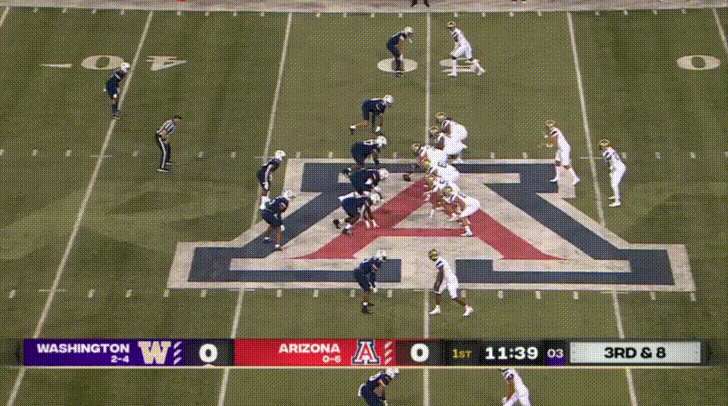





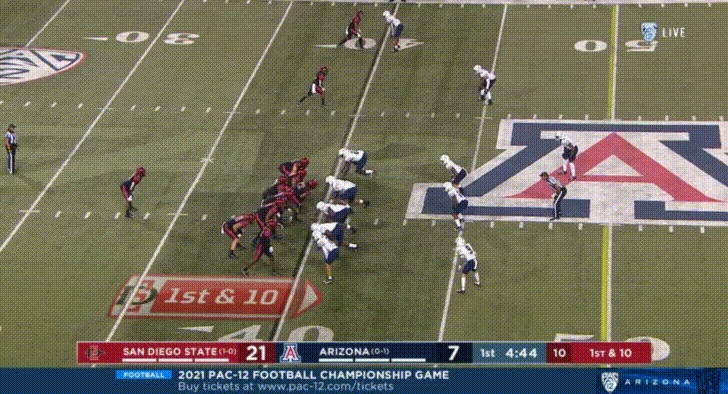
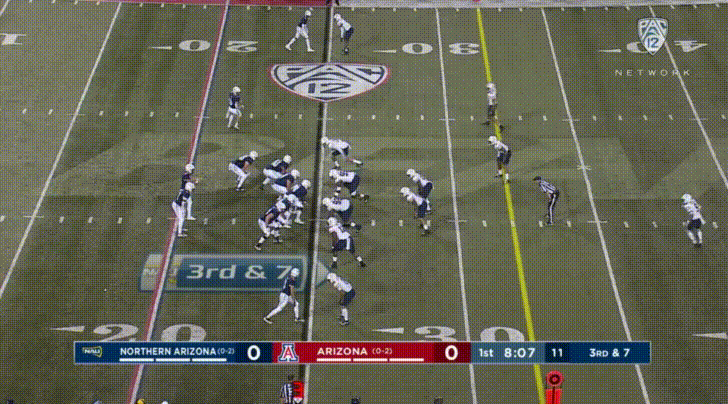
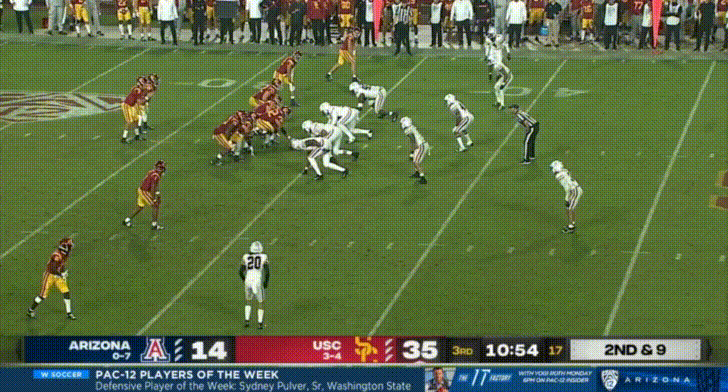

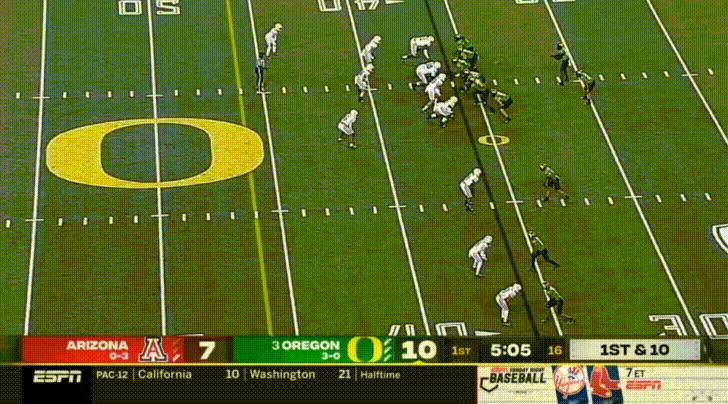




Going into the week, a story line was the health of Craig (LT) and Coleman (LG). At the beginning of the week, Wilcox said both were day-to-day. Later in the week, Craig was doubtful and Coleman was still day-to-day. This alone did not bode well for the OL that was just beginning to apparently "gel". Now, with COVID who knows who shows up to play on OL. Given the Cat's strength is DL an already tough situation (2 OL possibly out of the game) has become significantly worse. Unless someone was out at the airport filming Cal as they boarded the plane to Arizona, we won't know until game time who is available.
All of it is not good for the Bears. That said, the Bear will not quit, the Bear will not die!!
Go Bears!!
Sounds like the key is to get rid of the ball quickly (not Chase's strength....) to the WRs on overmatched DBs.....or run it down their throats.
Please let us not be the covid posterchildren........